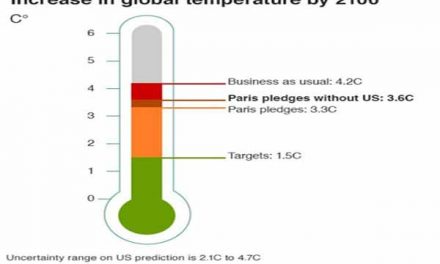
Photo: MorningTicker
Washington, US (BBN) – A remarkable new study claims that cow farts may be a much bigger factor in climate change than scientists previously realised.
Scientists have long been aware that methane emissions from cows can impact on our climate, but a new study claims that cow farts may have had a far bigger impact on global warming than we thought possible, reports MorningTicker.com.
The findings, published in the journal Carbon Balance and Management, claims that we may have been off in our calculations of methane emissions from livestock by a staggering 11 percent.
Methane is a natural byproduct of the cow as its gut microbes breakdown the tough vegetation it eats. Methane contributes to the greenhouse effect by trapping the sun’s heat and warming our planet.
While carbon dioxide is the biggest culprit in this effect, methane is far more effective than CO2 when it comes to keeping heat.
This particular project was sponsored by NASA’s Carbon Monitoring System research initiative. Scientists think that previous estimates on cow methane emissions used out-of-date data, and that the correct figure for 2011 is about 11 percent higher than previous estimates.
“In many regions of the world, livestock numbers are changing, and breeding has resulted in larger animals with higher intakes of food,” Dr. Julie Wolf, U.S. Department of Agriculture (USDA), Agricultural Research Service (ARS), senior author of the study, said in a statement from BioMed Central.
“This, along with changes in livestock management, can lead to higher methane emissions. Methane is an important moderator of the Earth’s atmospheric temperature. It has about four times the atmospheric warming potential of carbon dioxide. Direct measurements of methane emissions are not available for all sources of methane. Thus, emissions are reported as estimates based on different methods and assumptions. In this study, we created new per-animal emissions factors – that is measures of the average amount of CH4 discharged by animals into the atmosphere – and new estimates of global livestock methane emissions.”
Dr Ghassem Asrar, Director of JGCRI, a co-author of study, added: “Among global regions, there was notable variability in trends in estimated emissions over recent decades. For example, we found that total livestock methane emissions have increased the most in rapidly developing regions of Asia, Latin America and Africa. In contrast, emissions increased less in the US and Canada, and decreased slightly in Western Europe. We found the largest increases in annual emissions to be over the northern tropics, followed by the southern tropics.”
BBN/MMI/ANS









